by Alex Dueben
![80560-3 Mech ]1[.indd](https://www.comicsbeat.com/wp-content/uploads/2016/11/80560-3.jpg)
Kirchner invited me to his house, where he lives with his wife, the artist Sandy Rabinowitz. Their house is dominated by a large room which serves as a dining room and living room, and against the windows, a drawing table and work station for each of them. We talked about Kirchner’s long career, which began while he was still a student. He was an assistant to Wally Wood and Tex Blaisdell, an artist and illustrator for The New York Times, Screw, and many other publications, has written eight books of nonfiction, been a storyboard artist and worked in advertising for decades.
He’s also not slowing down any time soon. His new project, the comic series “Hieronymous and Bosch” will be appearing on the Adult Swim website adultswim.com. Kirchner will be appearing this weekend at Comic Arts Brooklyn.
Alex Dueben: Paul, you’ve had a really interesting career. I don’t think that it’s the most logical or expected path that the guy who did The Bus and worked at High Times would go into advertising.
Paul Kirchner: From a career perspective it’s probably best to stick with certain things; I, for some reason, just didn’t think that way. [laughs] Doing Dope Rider was just a strange series of events. I was trying to get into comics and doing fan art and I realized that I actually needed to draw a complete story. So I did this western and it was not quite surreal but trippy and very influenced by Steranko. I always liked the kind of thought he put into frame progressions and overall page design.
I was at Cooper Union and I got so comics focused that when we were drawing from a model I would draw the model and then start adding all these barbarian elements and ruined cities. One of the girls in my class had been at the New York High School of Art and Design and she said, I know someone who likes to make women look the same way you like to make them look. That was Larry Hama. She gave me his phone number. I went to see him and we got on the subway and went up to Neal Adams’ studio. Neal was an entry point for a lot of people to get into comics because you go up and show him your work. There was a front room of the studio where there four or five drawing tables and you would start tensing up when someone would come in with their portfolio because he was merciless. If Neal liked the stuff he would start making phone calls and get you appointments with editors, but sometimes he’d be flipping through the pages going, bleh. Neal called Joe Orlando over at DC and Joe hooked me up with Tex Blaisdell who was doing Little Orphan Annie.
Dueben: I know that one of the many publications you worked at early in your career was Screw, which is a publication where so many people contributed.
Kirchner: This guy at the Mego Toy Company liked a Screw cover I’d done, which was in the Wally Wood style and he got in touch with me. They wanted a line of toy soldiers developed and I did that for about a year and a half. I took a beating because I didn’t realize the company was going out of business. [laughs] Anyway when that company dissolved it led to people being spread far and wide and I kept getting work from different people. I was working for Ideal Toys for a couple of years on Robo Force. I worked for Coleco. Then all those companies went out of business. [laughs] The toy company work led to me working for a company that was then called TelePictures. They did these popular magazines for kids based on popular toy lines. It was one of these clever ruses because there are still moms that don’t think their kids should be reading comic books, but this was a magazine. It had puzzles and short stories and mazes, so it looked semi-educational, but it would have a comic as well. I got brought in to write and draw comics–He-Man, Thundecats, Go-Bots, Power Rangers.
That led to ad agency work. An ad agency got in touch with me because they had the Go-Bots account and they really wanted someone who was familiar with them. That was the mid-eighties and then I started getting storyboard work. I found I was pretty fast at it, which was surprising to me because I was always so slow with comics, but I didn’t have to attempt to be realistic in storyboarding. I could have a more comfortable style. It was very important to communicate gestures and emotions. I really enjoyed doing advertising work. I liked the atmosphere at the agency. It was a fun place.
I’d been working there freelance for about ten years but during that period from the mid-80s to mid-90s I had the storyboards, I had a lot of toy company work, and I had magazine illustration work. They started asking me at the agency if I wanted to come on staff and I thought, I don’t know if I really want to be tied down and give up the other things. Then around 1995 or so, the toy companies were going bankrupt. Things were getting tight and I had three kids and this house with a mortgage so the next time the ad agency said you want to come on staff? I said, I guess I do. [laughs]
Dueben: You were working on staff at an ad agency for many years. Why did you leave? Or what was behind your leaving?
Kirchner: There was a restructuring. Some of the people had really gone nuts when the boss let them know they were going to get laid off. They were screaming and yelling at her and telling her that she had ruined their life. When I get laid off, I was going to talk myself into steady freelance work. And that’s what I did. She told me, I’m sorry, and I started by saying well I’ve really enjoyed working with you, I’ve learned a lot from working with you, I think I’m better prepared to go back to freelancing than I was before, I understand the industry better. I got a lot of work from her for the next couple years. But then she got cut loose too.
At this point the toy business was all gone, the editorial work was all gone too. I kept busy with storyboarding, but in the last ten years it started dwindling a bit. Lately advertising is just trying to figure out what the hell they’re doing because people don’t watch the ads on TV. The younger generation often don’t even watch whole shows. The storyboarding work has really petered out. I have a job right now for snapchat commercials. It has to be very entertaining and only 5-10 seconds.
Dueben: So advertising work slowed down and you had a little more time and energy and interest in comics again or what happened?
Kirchner: As the advertising work slowed down I began to get pretty depressed. Its an ego thing. When I first started getting assignments from toy companies or ad agencies when I was doing my own stuff, it was great. When people would say, Paul we need you to do this, that’s a good feeling. When that stops happening, it’s a bad feeling. [laughs] When Claude Amauger published the 2012 collection of The Bus, interest in it had been perking up because people had been putting up the old strips on reddit or pinterest or tumblr and so I was starting to get fan mail again. I still had some of the old strips and some people wanted to buy them. I started thinking about it again and it was a weird thing because in the years that I had been doing assignments I had come to feel that I probably just couldn’t do that stuff anymore, but the ideas started coming to me again.
I communicated with Claude and he said, do some and I’ll print them. Eventually I had enough for a respectable book and this French gallery owner just bought the whole slew. That was pretty good. It’s not great but it’s better than going down the drain. [laughs] The other thing was when I started coming up with The Bus and thinking of where I could market them, I tried High Times. They didn’t want The Bus but they were coming up on their anniversary issue and they said, would you do another Dope Rider? I did one and they were very excited about it and they wanted me to do one page a month and I’ve been doing that. I’ve been doing that and it’s good, the originals have been selling, High Times pays me a pretty decent amount. Eventually there will be a collection of that.
Dueben: I read Dope Rider and I think El Topo and other work that some people call trippy but it’s more surreal. For you, the drug element is an excuse for the surrealism. Murder by Remote Control is just crazy. Which I’m sure turns off some people, but that’s also the appeal.
Kirchner: I just don’t know another way to do it. I have different styles obviously. The Bus isn’t drawn the same way as Murder by Remote Control is drawn and my advertising style is a little more loose.
For Murder by Remote Control I really wanted to do things realistically. It wouldn’t make sense to have the surrealistic element hint to the reader that this part isn’t real. I wanted it to be like a crazy person who just can’t distinguish between reality and fantasy. That’s all intentional.
Dueben: I’m sure Murder by Remote Control confused a lot of people. The people who knew your crazy work read the first few pages and were, like this is boring, and the people who knew van de Wettering’s mystery novels flipped to the middle and were shocked and confused.
Kirchner: Janwillem proposed the idea of doing it to me. We met and he loved Dope Rider and my Heavy Metal stuff and he wanted to do something with me. He wrote an outline of the plot, about seventeen type-written pages. Clearly he had written it giving me as much latitude to draw as much as what I wanted to draw as possible. It was written for the visuals. You could have illustrated the story literally–without the fantasy elements–but then it would be nothing. It would just be some Agatha Christie short story. He didn’t want that. There was a time when we were working Stan Lee-Jack Kirby style, bouncing ideas back and forth. Him plotting things and then me putting the page together and in the artwork creating a lot of the visual gags and how things would work. He never said, maybe we should do this. He let me take the lead. When it was all tightly penciled I went up to him his place in Maine and we scripted it together.
At that point I felt a little taken aback. Granted I had input into it, but I had this feeling, I’ve spent over a year on this thing and yes he had laid a lot of the groundwork but in two or three days, it was all scripted. At the time I felt like he should have added an additional layer. I’ve expressed some dissatisfaction to people who have talked to me about the book over the years, but when Dover was going to reprint it, I had to really go through the book again and I’ve changed my mind about it. I do like the story. I don’t think there’s anything wrong with it. I don’t think it needed more or different dialogue. I read other graphic novels and I think it stands up just fine. So no apologizing for it.
Dueben: I do understand what you’re saying, though. The text is very straightforward while the art and the design veers off in different direction. Which makes it more surreal, really.
Kirchner: The funny thing is though is that when something is done, the flaws leap out at you but sometimes when you put things aside you think, this is actually pretty good. So I don’t look at it and think, I wish I did this or that differently. One of the things I’ve been thinking about is that as an artist you have your limitations. We can’t all draw like Moebius. Moebius could draw a figure and he could completely model the musculature in crosshatching and if I tried to do that it would look like a mess. So I don’t do that. I take it to the level of finish that I’m capable of. I think I have other strengths that some other people may not have. You’re always going to have strengths and weaknesses and some elements that make your work strong, might make it weak in another way.
Dueben: I have to ask about the last page of the book where the detective ends up in his locker. Where the heck did that come from?
Kirchner: That was Janwillem’s idea. He goes back to the station and everybody looks like him and they’re all put away. I think it was just an absurd thing he wanted to do. [laughs] I thought it was a good way to end it actually.
Janwillem was just such a great guy. One of these people you miss terribly when they’re gone. We kept in close touch, but I wish I visited even more. You know how you have an experience that may strike you as funny in an odd way and you have one friend you know will love hearing that story and everyone else will go, huh, what? Janwillem was that guy. When those people die off, you feel cut off from that ability to share an experience. I’ve been fortunate in knowing a handful of people like that in my lifetime who have had that kind of effect on me.
Dueben: Did you two ever talk about working together again?
Kirchner: Oh yeah. For a while I didn’t think we’d get this published at all. This sounds very mercenary, but you have to live. When he was initially proposing it he was talking about I think we’ll get a $20,000 advance here and then more here. Janwillem was quite wealthy and you meet someone that’s obviously success and it seems like a good idea. Then when the project was done, we were butting our heads against reality. We had so much trouble getting it published in the US. There was no graphic novel market. It’s not like it was the first graphic novel, but publishers didn’t know what to make of it.
We finally placed it with Ballantine which brought it out in a small version and the advance was just so little. Janwillem wrote up another proposal, but by that I was onto other things. Books take a tremendous amount of energy. The books that I wrote, I knew they wouldn’t pay that well. The book was just my excuse to pursue something that I found very interesting. You’re always partly motivated by fairly unrealistic fantasies; you need those. You wouldn’t get anything done if you didn’t have some unrealistic fantasies. But after the trouble with getting the first one published I thought I just can’t plunge into this and come out if with maybe 1500 dollars. So we didn’t do it.
Dueben: Do you like how the Dover edition came out?
Kirchner: I love it. I was so excited. One of the things that was frustrating to me at Ballantine was that I penciled that cover design and submitted it and they said, no, we want to come up with our own cover. They came up with a cover that I thought oh god this is just dreary looking. When Dover was going to do it I told Drew Ford I have a cover design I did thirty years ago. I sent him a scan and he said, I like it.
Dueben: So what are you working on right now?
Kirchner: My latest project is about this guy in hell. It’s called Hieronymous and Bosch. Bosch being this little duck. I’m coloring it on the computer. I’ve done like thirty of them. All one pagers. We’ll see what happens. Maybe it’ll become a giant hit television program. Who knows? You’ve got to have those giant unrealistic fantasies. [laughs]
Dueben: So right now you’re doing Dope Rider, The Bus, and now Hieronymous and Bosch?
Kirchner: I’m retiring The Bus for the time. The ideas are coming pretty well on Hieronymous and Bosch, but I really don’t think I have any more Bus ideas for the time being. This is where my business plan is not that good. The smart thing to do would be to keep doing Bus strips, but I just can’t stick to a plan.
Dueben: You have started doing shows again.
Kirchner: Not having really stuck with the comics I don’t have the name recognition that would be helpful at this point. It was funny at the Comics Arts Brooklyn because people would come by and there were people that actually remembered The Bus, then there were young people whose father had Heavy Metal so they kind of knew it, but what was gratifying is that there were people who had absolutely never heard of it and they liked it and bought the book. I thought, well that’s great, I’m not relying on nostalgia value.
Dueben: Do you still do everything by hand? You have a computer here but you also have many, many pens and pencils and markers.
Kirchner: With everything becoming digitized what’s working to my advantage is the people I work for don’t have to know how old I am. [laughs] Which is something you worry about. Everyone is advertising is like 28 years old. [laughs] Just the fact that I actually do things in ink rather than drawing it on a tablet is old school to them. I just don’t think I’m going to adopt to the tablet. When people are good at it it’s amazing. I realized that for the type of comics I’m doing, most of the money is from selling the originals so I’ve got to produce an original.
I’ve gotten pretty fast at coloring on the computer. I still have this giant array on markers, but the computer color looks so much better, so much cleaner. You have the option of changing it and fixing it. I really should give all the markers to some art school. I figure eventually they’ll dry up and I’ll just throw them away. I color with the mouse. My wife, who uses a tablet, was very impressed with my mouse speed. [laughs]
Dueben: So you’re having fun with “Hieronymous and Bosch?”
Kirchner: They’re faster to do than The Bus. I’m trying to get a woodcut look. I’ve also found that I like to use a heavier outline to separate elements. When I first ink it, I just go over all my pencil lines. When that has fully dried I clean up the page and get all the pencil off it. Then I really go over that ink line and heavy it up and give it weight where it needs it and separate things. I like the look. It’s different than what I used to do. The other thing that makes Hieronymous and Bosch easier to do than The Bus is on the Bus I have to keep drawing the bus clean, but I decided when I was going to depict the landscape of hell that everything should be run down and dirty looking with no straight lines.
It’s sad when you think of somebody like Steve Ditko, who I was such a huge fan of. At a certain point he obviously felt that he’d been very abused by the business and he was giving more than they were paying him for. Stuff like Hawk and Dove just wasn’t great and has this “I could do better but why should I?” attitude. I think I still have the attitude that I have something to prove, which is the attitude you start out with. I think it’s a good attitude to maintain.


![80560-3 Mech ]1[.indd](https://www.comicsbeat.com/wp-content/uploads/2016/11/Kirschner-Murder-Banner.jpg)
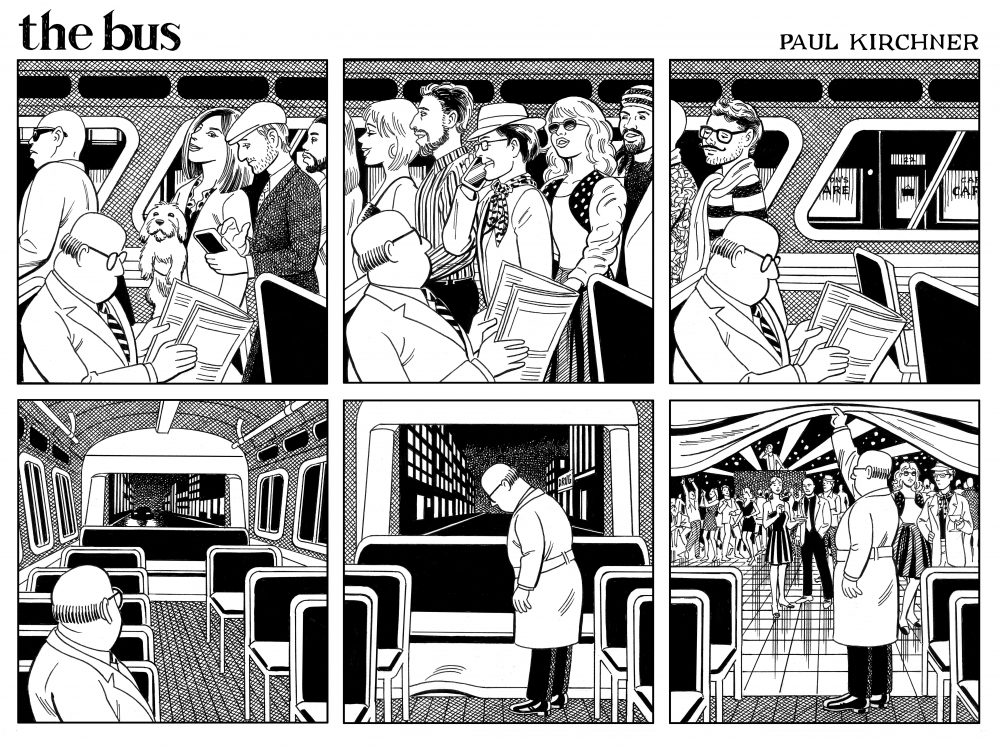
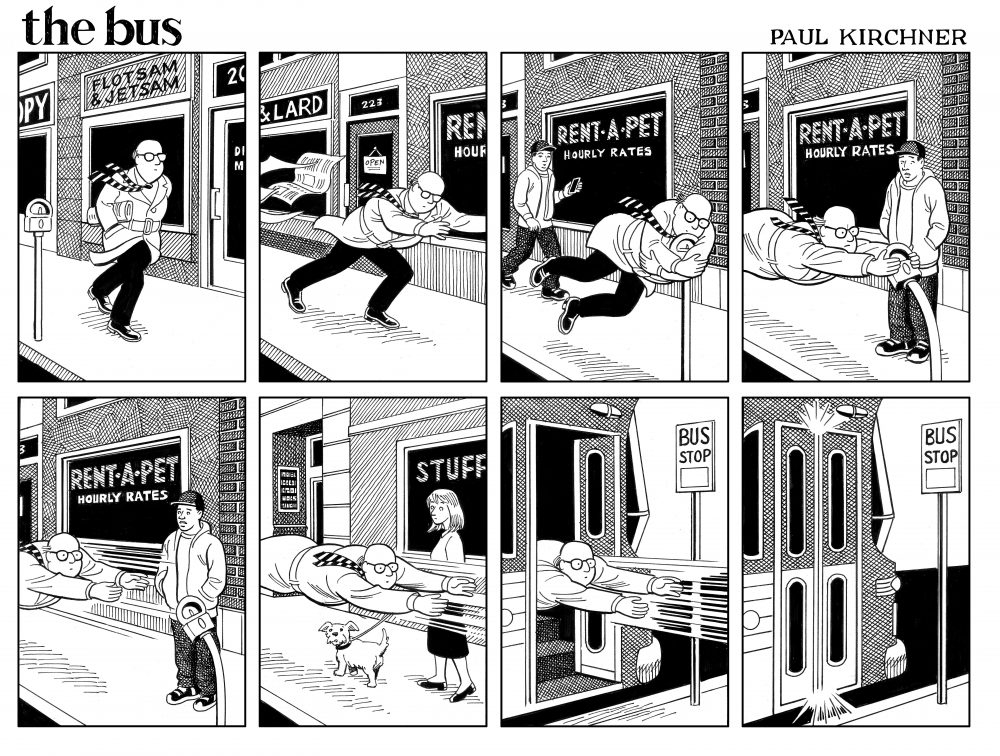
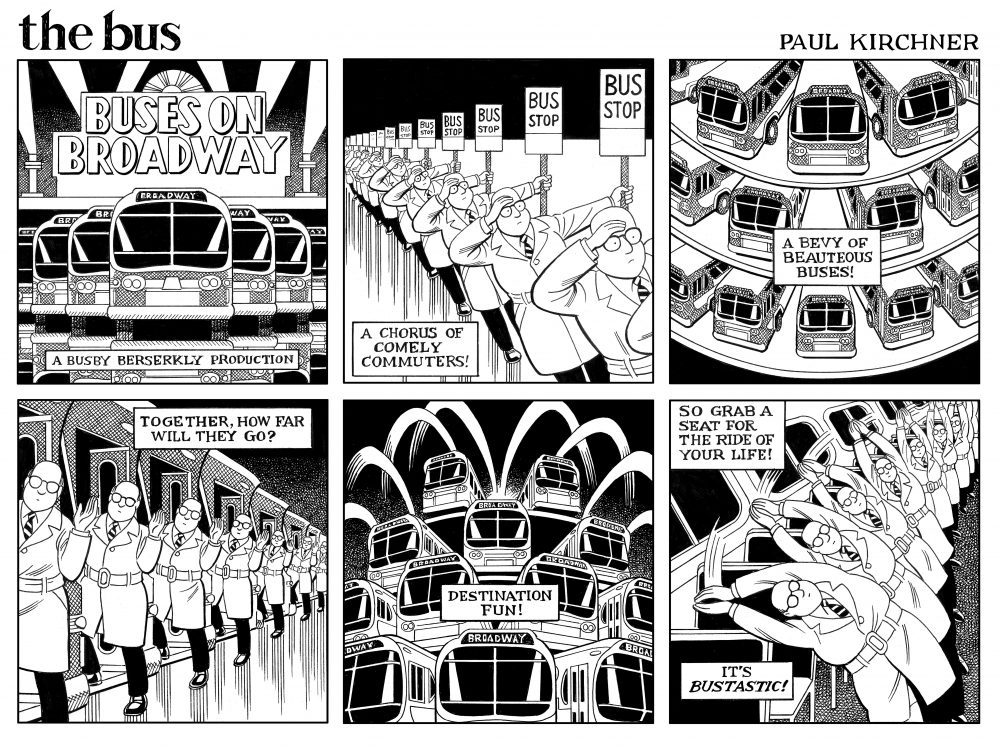
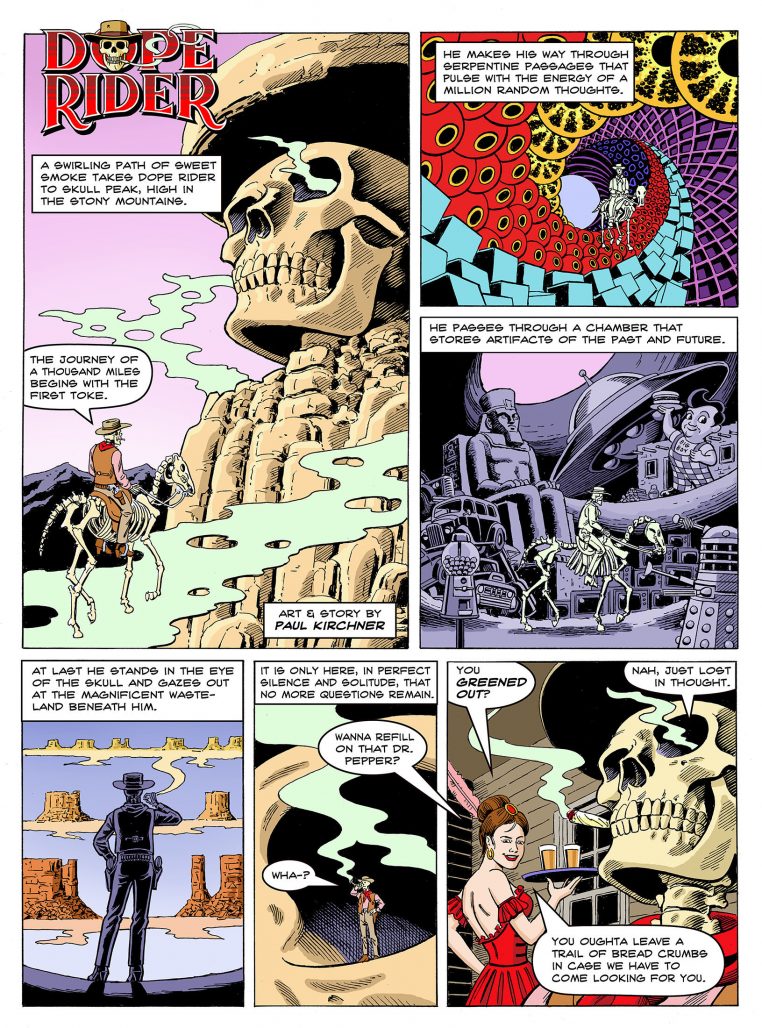
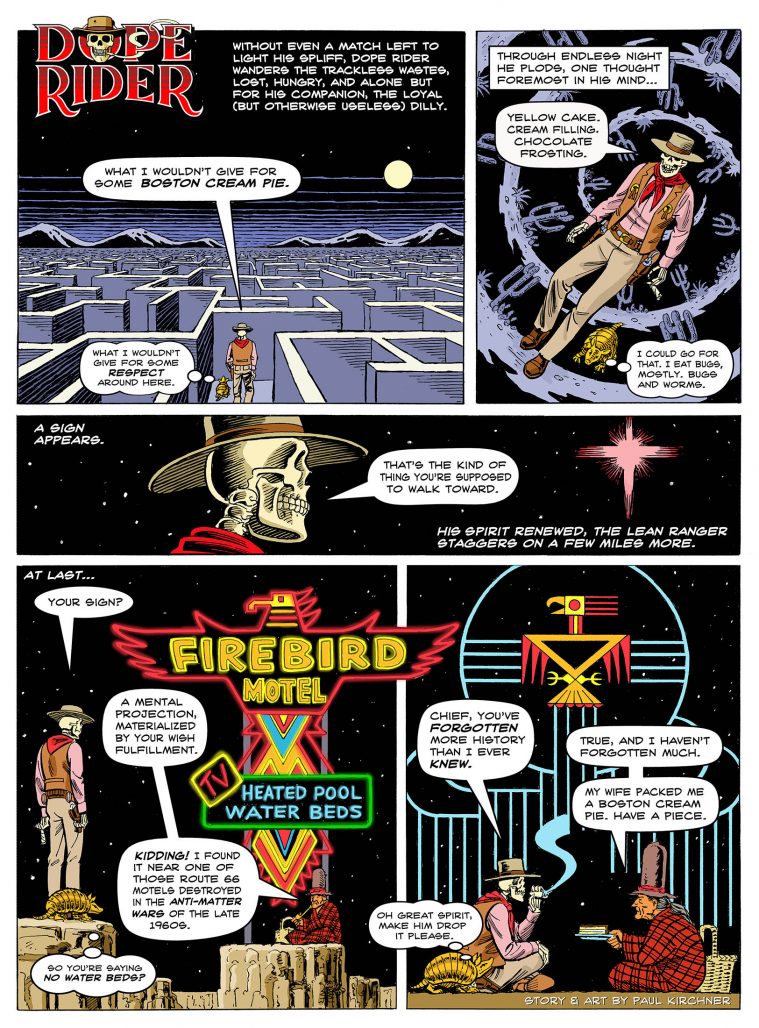
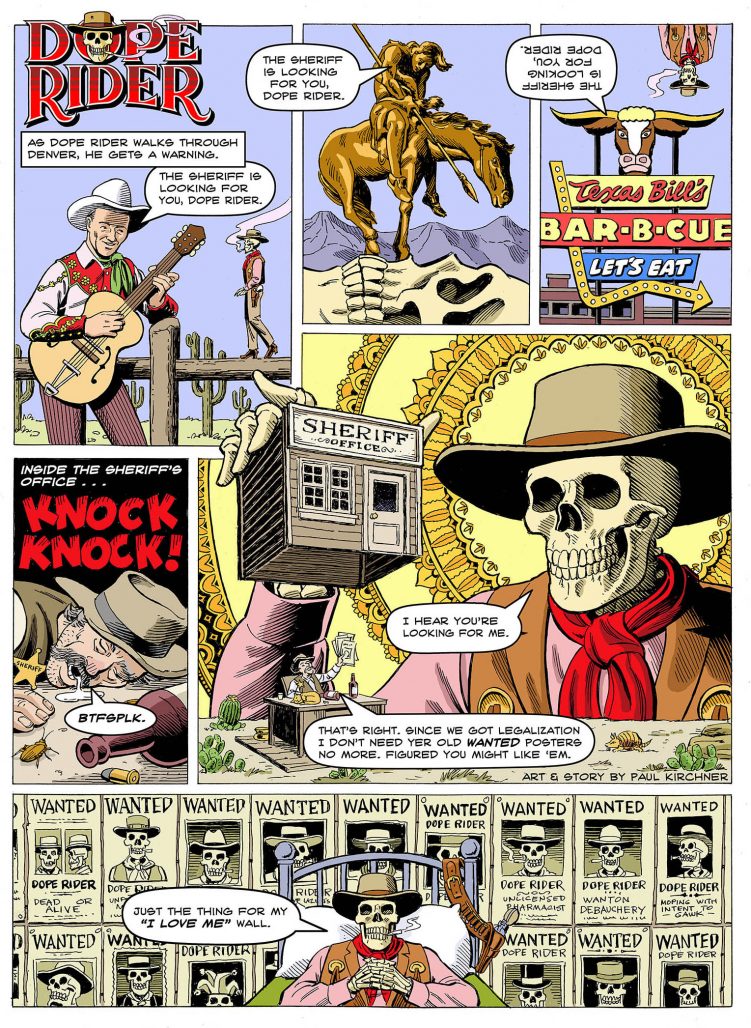






Nice interview and samples. And a “Wanted: Dope Rider, Dead or Alive” poster for a skeleton? IT’S BUSTASTIC!
There are several ways to read the end of MURDER BY REMOTE CONTROL, which is interesting, and I have to think both creators had their own? I suspect Kirchner isn’t the sort to explain out his art, so I wouldn’t take too literaly his flippant answer.
He says he had a positive experience with the biz, good for him. That armadillo lost in a maze and thinking, “What I wouldn’t give for some *respect* around here”, maybe we could think of Steve Ditko or Wallace Wood…
Comments are closed.